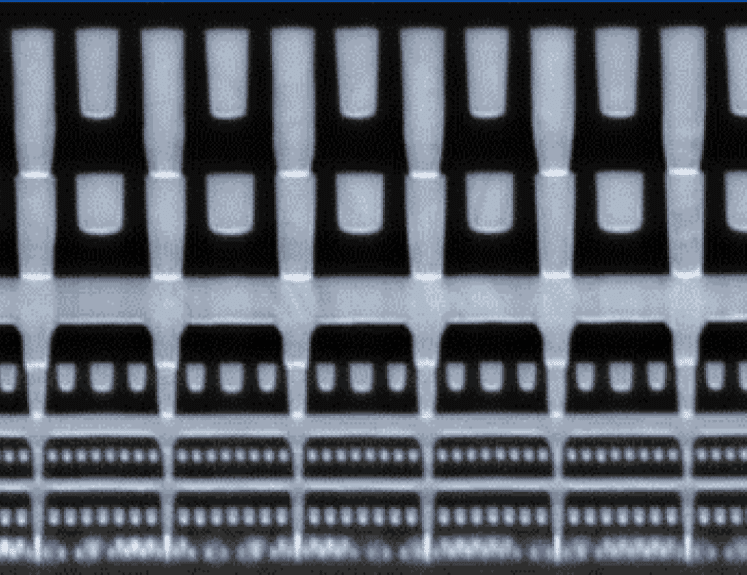Functional Modeling is a powerful tool that drives innovation and improves engineering systems. Using the System Functional Model tool in the PRIZ Innovation Platform, engineers can analyze components, identify inefficiencies, and develop innovative solutions.
This article demonstrates functional modeling through an example of an IC interconnection layer, showing how it simplifies systems, cuts costs, and boosts performance. You’ll discover how this method can enhance your engineering outcomes and guide your innovation process.

To innovate and improve your engineering system, start by creating a Functional Model and performing a functional analysis.
Functional Modeling is the most effective method for:
The PRIZ Guru’s Innovation Platform offers a unique System Functional Model tool that provides:
Let’s examine a Functional Model of a typical IC interconnection layer used in semiconductor microchips.
This analysis is available as a project on the PRIZ Platform and published in PRIZ Hub: Optimizing IC Interconnection: A Functional Approach to Innovation (the project is in progress).
For more details, you can refer to these resources:
Functional Modeling maps the components of a system and how they interact through functions. A Functional Model visualizes these component-function relationships and enables calculations of key system parameters. Innovation often comes through eliminating low-functionality components and simplifying the system.
Components and functions:
A Functional Model calculates the main system parameters and determines the functional and problematic ranking of each component.
This analysis drives engineering innovation by helping identify problems and generate ideas for system development.
An IC interconnection stack comprises multiple layers that connect transistors. The number of layers correlates with transistor size—smaller transistors require more layers. The RC-delay, which is the main parameter of interconnection, presents a significant bottleneck for IC scaling.
A SEM image of a typical IC interconnection stack is shown below:

Transistors are located at the bottom layer and are not visible in this image. Above them, multiple interconnection layers form a stack that provides connections between the transistors.
Let’s create a Functional Model of a fragment of one layer, as shown below:

For that, we used the Functional Modeling tool of the PRIZ Innovation Platform.
The purpose of the IC interconnection is to electrically connect the metal in the layer below to the metal line above. Therefore, the system’s product is Current.
Here are the key challenges: • A dielectric material (ILD) is needed to mechanically support and electrically isolate the metal lines • The ILD (Interlayer dielectric) is typically made of SiO2 or modified SiO2 • The metal lines and via are made from copper (Cu) • Cu can diffuse through the ILD, causing electrical shorts • A barrier layer (typically Ta) prevents Cu diffusion into the ILD within each layer • An etch stop layer (typically Si3N4, SiC) prevents Cu diffusion into the ILD of the upper layer • Due to electromigration effects in Cu, the bottom barrier separating the via from the lower metal layer prevents the formation of large voids
In our Functional Modeling, we must consider RC-delay, which affects signal propagation. RC-delay (R×C) depends on two factors: • R: total resistivity of metal layers and vias (should be minimized) • C: total capacitance of vertical and horizontal dielectric gaps between metal lines (should be minimized through lower dielectric permittivity)
Here is the Functional Model of the IC interconnection layer

This seemingly simple structure reveals a complex web of functional relationships in our model. The platform has calculated the key system parameters:

Both Operational Effectiveness (OE) and Operational Perfectness (OP) are very low, but let’s set that aside for now. The main paradox is that while the Barrier is clearly the most harmful component in the system, it paradoxically shows the highest functional rank—even higher than the Cu-via and Cu-metal components that were specifically designed to conduct current.
So what can we do to improve the interconnection layer? Our Functional Model reveals that eliminating the Barrier would be ideal. However, we need the Barrier to prevent Cu atoms and ions from diffusing into the ILD (SiO2) matrix. This creates a classical physical contradiction: the Barrier must simultaneously exist and not exist.
The solution lies in the principle of Separation—we can eliminate the solid Barrier and replace it with a very fine air gap between Cu and ILD. This gap must be precisely engineered; we don’t want a large air gap between metal lines, as this would compromise mechanical rigidity and reliability. Instead, we need only a minimal gap between the metal line and ILD wall. Even if Cu and ILD occasionally make contact, such limited contact isn’t sufficient for significant Cu diffusion into the ILD matrix.
Here is the proposed new structure:

This structure brings us closer to ideality. An ideal component is one that does not exist physically yet still provides the required function. This is exactly what we have achieved here. The barrier, while not physically present, still performs its essential function of separating the Cu lines from the ILD matrix.
The updated Functional Model shows significantly reduced complexity

The calculated parameters of the novel interconnection layer show system improvements, though further simplification remains possible.

While we won’t dive into the manufacturing process for the fine air gaps (which is feasible), what’s important is that this approach opens new paths for development and innovation. Innovation consistently involves simplifying systems, eliminating unnecessary components, and maintaining essential functions.
Innovation is essential for survival. At its core, innovation means simplifying systems and eliminating unnecessary components. This approach reduces costs and improves functionality. In contrast, continuously adding components and increasing system complexity leads to higher costs and degraded performance.
Remember: while we pay for a product or service’s inherent value, most of our payment actually covers the cost of producers’ unresolved problems.
System Functional Modeling stands out as the most powerful creative thinking tool. Master it, and you can transform the world.
Have questions or need help getting started? Contact us today – we’re here to help you unlock the power of Functional Modeling!